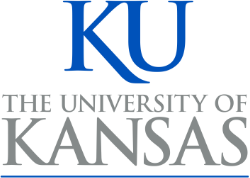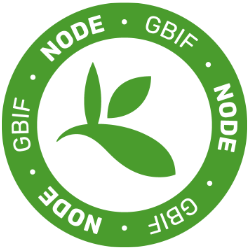By Maria Beatriz de Souza Cortez and Pamela S. Soltis
Image credits: Maria Beatriz de Souza Cortez
In 2014, iDigBio assembled an online directory of DNA Banks and Genetic Resources Repositories in the US. The directory listed 54 institutions amongst Natural History Collections, Governmental Agencies, Research Centers and Universities. Each entry was connected to a URL and a description of its genetic resources collection. These resources included DNA and/or RNA samples preserved in modern cryogenic facilities to century-old tissues stored in 95% ethanol.
The goal of creating this directory was to concentrate and disseminate information about genetic resources, considering their increasing importance to natural history collections. Even though preserved animals, pinned insects, fossils and herbarium sheets continue to be relevant and essential resources for biodiversity studies, DNA and RNA have become a vital part of systematics through molecular phylogenies. In fact, many museums have designated facilities and staff to store and curate molecular resources. This directory was meant to serve as a temporary platform while the Global Genome Biodiversity Network (GGBN) was in the process of organizing its own data portal on genomic resources from well-managed collections across the globe. As a result, since its creation, iDigBio’s directory of DNA Banks and Genetic Resources Repositories had not been updated.
Six years have gone by, the year is 2020 and we are currently experiencing the biggest pandemic since the Spanish Flu. Things have certainly changed, and we must come together as a society to adapt and think of concrete actions to understand and mitigate not only this pandemic, but those likely to follow. Interactions between humans and natural habitats are becoming ever more frequent and so will spillover events that lead to epidemics and pandemics cause by zoonotic pathogens.
How can natural history collections and data aggregators, such as iDigBio, contribute to overcoming this challenge? Are we equipped at all to help? The answer is yes, and it mainly stems from the wealth of resources in natural history collections. The idea to integrate public health and natural history disciplines is certainly not new, as it started more than one hundred years ago through the creation and short-lived existence of the Department of Public Health at the American Museum of Natural History (more on the history of this initiative can be found in a paper published by Brown in 2014).
Moreover, this idea has been extended, tested, and proven to be effective during an outbreak of hantavirus pulmonary syndrome in the Southwestern US back in the 1990s. Virologists partnered with mammologists to use the extensive temporal and spatial data on hosts associated with hantaviruses housed in natural history collections. This partnership yielded a holistic understanding of this grave public health matter and the formalized idea of A Museum Approach to Pathogens, as suggested by Dunnum and collaborators in a paper published in 2017.
At the time of the hantavirus outbreak in the US, genetic resources were mostly non-existent or in early stages in natural history collections, yet they were able to contribute enormously to the understanding of zoonotic pathogens in a very specific and unique way. Not only are they powerful because of the type of data and analyses enabled, but they also provide the advantage of being permanently linked to a vouchered specimen.
When a specimen is deposited in a natural history collection, the accompanying data and metadata extend far beyond the physical specimen (for more on this topic, access this paper on the concept of extended specimen). These different layers of information – location, date of collection, tissues, photographs, audio recordings – are all connected and provide an ample initial context for any researcher. According to Dunnum and collaborators, “…availability of frozen archives of wild vertebrates in museums permits rapid and efficient screening for diverse zoonotic pathogens and represents a major step forward in assessment, prevention, and mitigation of emerging diseases.” Moreover, A Museum Approach to Pathogens could apply to plant pathogens as well, if agronomists and horticulturalists partnered with botanists and plant systematists.
But before one can think of implementing this approach, one needs to expose museum resources to researchers who come from other disciplines and are not acquainted with them. Even though simple, this first step is crucial for bringing together public health initiatives and natural history resources effectively. We will only be able to fully integrate natural history collections into understanding and mitigating epidemics when virologists, epidemiologists, pathobiologists, etc. acknowledge the types of resources housed in natural history collections and learn how to request permission to use them.
In this way, updating this directory seemed like the appropriate first step towards sparking an effort to bridge public health disciplines and natural history collections so that preventive strategies could be developed and fostered. Thus, we contacted previously listed institutions, asking for updates to be added to their descriptions and URLs. Also, we added new entries based on a publication by Dunnum and the Systematics Collection Committee of the American Society of Mammalogists. We further included resources from the US that were exclusive to the Global Genome Biodiversity Network.
Currently, there are 78 institutions in the directory, which indicates an increase of approximately 50%! Around 65% of the institutions previously listed in the directory in 2014 provided feedback, and approximately 40% of those indicated new content to be added. New entries were mostly created from content available online and through the survey produced by Dunnum et al. noted above. These institutions are all situated in the United States and span 35 states, including Alaska and Hawaii, and a territory, Puerto Rico. Without the feedback from many of these institutions and their online websites, it would have been impossible to update this directory.
The update process was very valuable and contributes enormously towards understanding what kind of genetic resources are available in natural history collections across the US. Those collections that house mammal tissues – and bats in particular – are now discoverable by anyone seeking to conduct genetic research on either hosts or pathogens. Contact information for each collection will enable sharing of materials to promote greater interdisciplinary research. Now that the first step has been taken towards A Museum Approach to Pathogens, it is time to roll up our sleeves and tackle the next step. Many task forces have been stablished to discuss this topic, but their temporary character may not sustain long-term impacts. Working groups are necessary, and iDigBio is certainly working towards this goal. We hope to continue this work so that COVID-19 can be recognized as the last major pandemic so poorly dealt with by humankind.
We would dearly like to acknowledge Breda Zimkus, Wendy Applequist and Grant Godden for putting together this directory back in 2014; Jon Dunnum and the Systematics Collection Committee of the American Society of Mammalogists for helping with the update process; David Jennings for working hard to implement the directory in the web; Deb Paul, for helping the blogpost come together; Molly Phillips for the publishing expertise; and ViralMuse, a task force dedicated to continued efforts towards bridging public health and natural history disciplines, so that preventive actions can be put in place to avoid the devastating effects of future pandemics.
References:
Brown JK. 2014. Connecting health and natural history: a failed initiative at the American Museum of Natural History, 1909-1922. American Journal of Public Health 104: 1877–1888.
Dunnum JL, Yanagihara R, Johnson KM, Armien B, Batsaikhan N, Morgan L, Cook JA. 2017. Biospecimen Repositories and Integrated Databases as Critical Infrastructure for Pathogen Discovery and Pathobiology Research. PLOS Neglected Tropical Diseases 11(1): e0005133.
Dunnum JL, McLean BS, Dowler RC and the Systematics Collections Committee of the American Society of Mammalogists. 2018. Mammal collection of the Western Hemisphere: a survey and directory of collections. Journal of Mammalogy 99(6): 1307–1322.
https://www.idigbio.org/content/dna-banks-and-genetic-resources-reposito...
Lendemer J, Thiers B, Monfils AK, Zaspel J, Ellwood ER, Bentley A, LeVan K, Bates J, Jennings D, Contreras D, Lagomarsino L, Mabee P, Ford LS, Guralnick R, Gropp RE, Revelez M, Cobb N, Seltmann K, Aime MC. 2020. The Extended Specimen Network: A Strategy to Enhance US Biodiversity Collections, Promote Research and Education. BioScience 70(1): 23–30.








